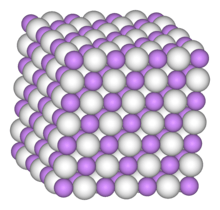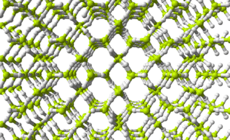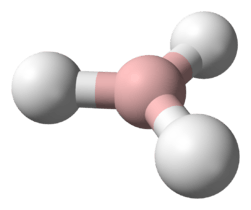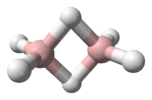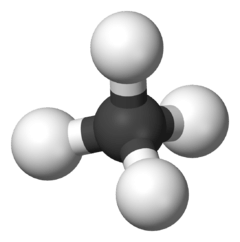Caesium hydride
Caesium hydride or cesium hydride (CsH) is a compound of caesium and hydrogen. It is an alkali metal hydride. It was the first substance to be created by light-induced particle formation in metal vapor,[2] and showed promise in early studies of an ion propulsion system using caesium.[3] It is the most reactive stable alkaline metal hydride of all. It reacts with water extremely vigorously.
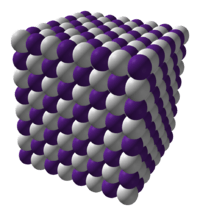 | |
| Names | |
|---|---|
| IUPAC name
Caesium hydride | |
| Other names
Cesium hydride | |
| Identifiers | |
3D model (JSmol) |
|
| ChemSpider | |
PubChem CID |
|
CompTox Dashboard (EPA) |
|
| |
| |
| Properties | |
| CsH | |
| Molar mass | 133.91339 g/mol |
| Appearance | White or colorless crystals or powder[1] |
| Density | 3.42 g/cm3[1] |
| Melting point | ~170 °C (decomposes)[1] |
| Structure | |
| Face centered cubic | |
| Octahedral | |
| Related compounds | |
Other anions |
CsF, CsCl, CsBr, CsI |
Other cations |
LiH, NaH, KH, RbH, and all other hydrides |
Except where otherwise noted, data are given for materials in their standard state (at 25 °C [77 °F], 100 kPa). | |
| Infobox references | |
The caesium nuclei in CsH can be hyperpolarized through interactions with an optically pumped caesium vapor in a process known as spin-exchange optical pumping (SEOP). SEOP can increase the nuclear magnetic resonance (NMR) signal of caesium nuclei by an order of magnitude.[4]
It is very difficult to make caesium hydride in a pure form. Caesium hydride can be produced by heating caesium carbonate and metallic magnesium in hydrogen at 580 to 620 degrees Celsius.[5]
Crystal structure
At room temperature and atmospheric pressure, CsH has the same structure as NaCl.
References
- Lide, D. R., ed. (2005). CRC Handbook of Chemistry and Physics (86th ed.). Boca Raton (FL): CRC Press. p. 4.57. ISBN 0-8493-0486-5.
- Tam, A.; Moe, G.; Happer, W. (1975). "Particle Formation by Resonant Laser Light in Alkali-Metal Vapor". Phys. Rev. Lett. 35 (24): 1630–33. Bibcode:1975PhRvL..35.1630T. doi:10.1103/PhysRevLett.35.1630.
- Burkhart, J. A.; Smith, F. J. (November 1963). "Application of dynamic programming to optimizing the orbital control process of a 24-hour communications satellite". NASA Technical Report.
- Ishikawa, K.; Patton, B.; Jau, Y.-Y.; Happer, W. (2007). "Spin Transfer from an Optically Pumped Alkali Vapor to a Solid". Phys. Rev. Lett. 98 (18): 183004. Bibcode:2007PhRvL..98r3004I. doi:10.1103/PhysRevLett.98.183004. PMID 17501572.
- A. Jamieson Walker (1924). A Text Book Of Inorganic Chemistry Volume I The Alkali Metals And Their Congeners.
